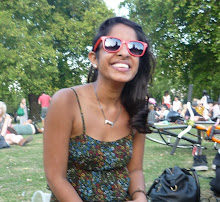Six years later a regretful Brooke Shields would sue Mr Gross in attempt to prevent further use of the image; which she claimed embarrassed and distressed her. However, a career built on producing a sexually explicit image did little to strengthen Shield’s argument. Her endeavours were met with little success as the court considered the contract signed by her mother, whose intent was to make her daughter a child-star, to be of a lawfully binding nature.
In fact Gross was a friend of Shield’s mother, whom in 1976 had been commissioned to take photos of her unwitting prepubescent daughter, for the Playboy publication Sugar 'n' Spice. To Gross’ dismay and despite his success in court, the effects of the trial not only tarnished his reputation but had ruined him financially. Fortunately for Brook Shields, the aftermath of the heavily made-up androgynous shot saw her career flourish; in 1978 she played the daughter of a prostitute in Louis Malle’s Academy-Acclaimed Pretty Baby. Two years later she and Christopher Atkins were teenagers on the path of sexual discovery in Randel Kleiser’s Blue Lagoon, while in that same year a then 14-year-old Shield appeared in Calvin Klein’s controversial jeans campaign. The TV ad included her trumpeting the infamous tagline, "You want to know what comes between me and my Calvins? Nothing."
In 1992, photographer Richard Prince approached Gross with an offer. He acquired the rights of the photograph and made it his own, by taking a photo of the photo and encasing it in a gold-frame. His title Spiritual America references a 1923 Alfred Stieglitz photograph of a gelded workhorse; a piece which shares similar themes of sexual ambiguity. The purpose was to comment on American psyche; on the commodification and premature sexualisation of a Pretty Baby who stares at you with adult-intent. With one click of a button Prince portrayed America’s obsession with fame, his photo symbolised not just the photo itself but the baggage it brought with it; all sparked by a mother treating her daughter like an object.
In 1998 the ‘thought-provoking’ photograph had been on display at Manhattan's American Fine Arts Gallery before being sold at a Christies’ auction for a staggering $151,000 (USD). In 2007, Spiritual America was to be a guest at New York’s Guggenheim Museum in a rather turbulent-free exhibition of the same name.
In 2008 however, Australian contemporary artist Bill Henson, saw New South Wales police and child welfare authorities remove 20 of his photographs depicting nude children, from Sydney’s Roslyn Oxley 9 Gallery. Mirroring Prince’s current debacle, Henson’s case was an earlier reminder of the tenuous affair between art and individual interpretation. Targets of social malaise, Henson and Prince, along with fellow photographers Annie Leibovitz and Nan Goldin, grudgingly continue to fend off claims of ‘lubricious titillation’.
At the time of the original Gary Gross photo, the seventies photographer was working on a project for a publication entitled The Woman in the Child, where he wanted to reveal the femininity of prepubescent girls by comparing them to adult women. Ten years later, appropriator Prince would interpret the image as 'an extremely complicated photo of a naked girl who looks like a boy made up to look like a woman'; however, it seems authorities from the UK’s obscene publications unit do not share his artistic outlook. Art enthusiasts have linked the withdrawal of the image to notions of censorship, condemning the UK authorities for policing a concept founded on subjectivity, where there is no ‘right’ answer, only individual understanding.
Gary Gross' photos of an underage Brooke Shields. Approach with Caution.







No comments:
Post a Comment